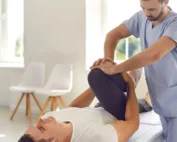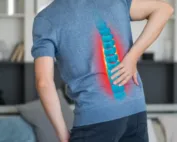Introduction:
Living with chronic pain can be isolating and frustrating. But there’s hope: laser therapy, offered by trusted practitioners, presents a viable option. Wondering if it truly works? Let’s delve into the science and effectiveness of laser therapy for pain relief.
Key Takeaways:
- Laser therapy offers potential relief for chronic pain by stimulating nerve regeneration, muscle relaxation, tissue healing, and reducing inflammation.
- The effectiveness of laser therapy depends on the power and wavelength of the laser used.
- Class 3 (cold) lasers and Class 4 (high-power) lasers are the main types used in medical laser therapy.
- Higher dosages and powers generally lead to better outcomes, especially for neuro-musculoskeletal conditions.
- The number of treatments needed varies based on the severity and chronicity of the condition.
Does laser therapy effectively alleviate pain?
Yes, laser therapy can significantly reduce pain by stimulating nerve regeneration, relaxing muscles, and reducing inflammation. Class 4 lasers with higher power output tend to yield better results. Patients may require multiple treatments depending on the severity of the condition.
Suffering from chronic pain it can feel incredibly frustrating and lonely. You may feel like you have nowhere to turn and no one that understands. However, there are options that are available to you, and one of these options is to have laser therapy from a professional and trusted practitioner. If you have never heard of laser therapy before, you may be asking yourself, “Does laser therapy really work for pain?” This is a great question and one that we are going to explain in detail below. Keep reading.
Can you really improve your condition and reduce pain with laser therapy?
While you may think that it is far fetched, you can achieve pain relief with light energy from a laser. Laser light energy can stimulate nerve regeneration, relax muscles, accelerate healing in damaged tissues, and reduce inflammation and pain. So, we will explain exactly how this will work so that you can gain a better understanding of the process.
Power and wavelength determine the capacity of the laser in terms of penetrating into the body. Once you are in the infrared spectrum and the wavelength is greater than 800 nanometers, laser energy will penetrate, similar to an x-ray. However, achieving the depth needed requires a considerable amount of energy or power.
What are Two Main Types of Lasers Used in Physical Therapy?
There are two different classes or types of lasers that are used in medical laser therapy. These are known as Class 3 and Class 4 lasers. Class 3 lasers tend to be less than 500 MW in terms of power. However, Class 4 lasers are greater than 500 MW.
You will sometimes see that Class 3 lasers are typically called cold lasers. This therapy may be known as low-level laser therapy or LLLT. On the flip side, class 4 laser therapy is called high-power laser therapy, and it is sometimes referred to as HPLT.
Most of the neuro-musculoskeletal conditions will have an improved response when there is a higher dosage and a higher power, which is where the function of time and power output comes in. The greatest results are going to be reached with a laser that has 30 watts of power or greater.
How many laser treatments will each patient require?
Patients will typically start feeling pain relief after they have had one or two treatments. However, in some cases, it may be five or more treatments that are needed to assist with the issue. The more extensive or chronic the injury is, the more treatments that are typically required. You can’t expect to get rid of 30 years of chronic pain in one week. The physiotherapist you speak with will be able to assist with your projected time frame according to your individual needs.
So there you have it: everything that you need to know about deep tissue laser therapy and whether or not it is effective in terms of pain relief. Should you have any questions or concerns, or if you would like to know more about this treatment and how it can benefit you, please do not hesitate to get in touch with us for more information. We are always happy to help in any way we can.
Recent Blogs
Why Physical Therapy Should Be Your Secret Weapon Before Surgery
Surgery, while sometimes necessary, can be a daunting prospect. The recovery process is often lengthy and filled with unknowns. But what if there was a way to optimize your body's readiness for surgery and [...]
Spinal Decompression Therapy: A Non-Surgical Option for Herniated Discs
The discs in your spine act as cushions between the vertebrae, providing flexibility and absorbing shock. When the outer wall of a disc weakens or tears, the soft inner core can bulge or push [...]
PRP for Knees_ A Promising Option for Pain Relief and Mobility – word
For many people, knee pain is a constant companion, limiting mobility and impacting quality of life. Traditional treatments like pain medication and physical therapy can offer relief, but they may not address the underlying [...]




